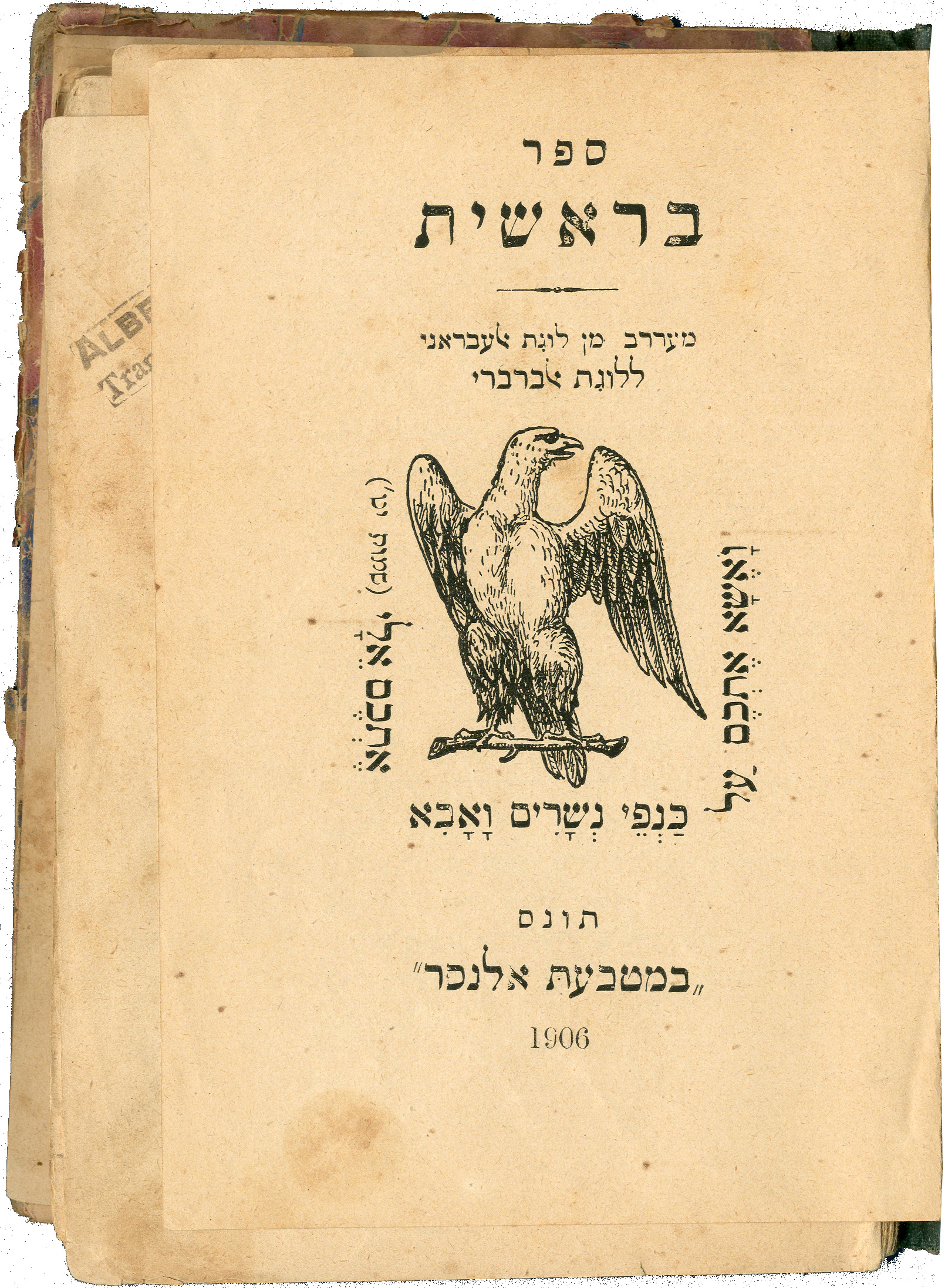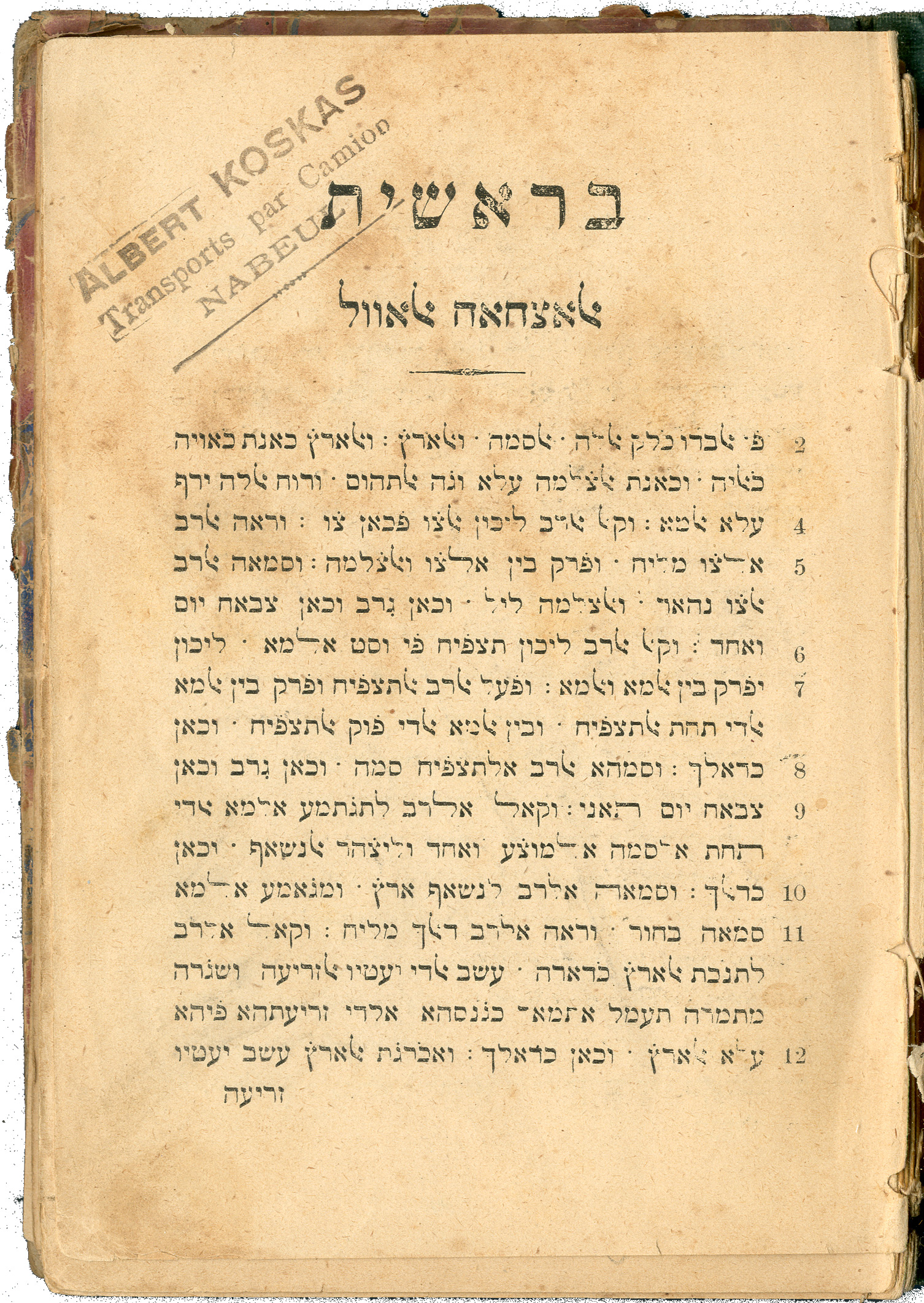Pictured here are the title page, preface, and an interior page of Sefer Bereshit [The Book of Genesis], published by Al-Nasr Press [Eagle Press], Tunis, 1906, and “Arabicized from the Hebrew language into the language of the Barbary.” “Language of the Barbary” (“Lughat al-Barbari”) is one of the colloquial terms Tunisian Jewish speakers of Arabic used to distinguish their vernacular from those of other North African and Middle Eastern countries, as well as from Standard Arabic.
The translator and founder/owner of the press, Rabbi Eliezar (Lazarro) Farhi (1851-1930), was one of the foremost pioneers of a Tunisian Jewish publishing renaissance that started at the end of the 19th century. A strong believer in the didactic potential of publishing, Farhi explains in his preface (pictured), “We decided to translate [the Torah and the Prophets] into the Barbary language so that any reader can understand them. We have … given [the book of Genesis] a low price, so that it might be available to all.” This was, however, to be the only book of Torah translation he published, making it somewhat of an exception, given that the bulk of Farhi’s prolific publishing projects were translations from Arabic popular and folk literature, such as the siyar sha‘biyya (lit. “folk biographies,” a corpus of Arabic folk epics), which he also considered to serve didactic purposes. Other publishing projects included journals he founded and stories he wrote in the form of parables. By publishing in vernacular Arabic written in Hebrew characters (as most readers did not have facility in either Arabic or Latin scripts) rather than in Hebrew or Standard Arabic (the languages of the lettered elite), Farhi led the trend to democratize the Jewish reading public. Furthermore, by publishing such works, particularly during the early decades of French colonization, Farhi showed that one could be modern—that is, participate fully in the institutions and norms of one’s time—without following a European definition or model of modernity.
Acknowledgment to Noam Sienna and Rachel Schine for their insights that contributed to this caption.


